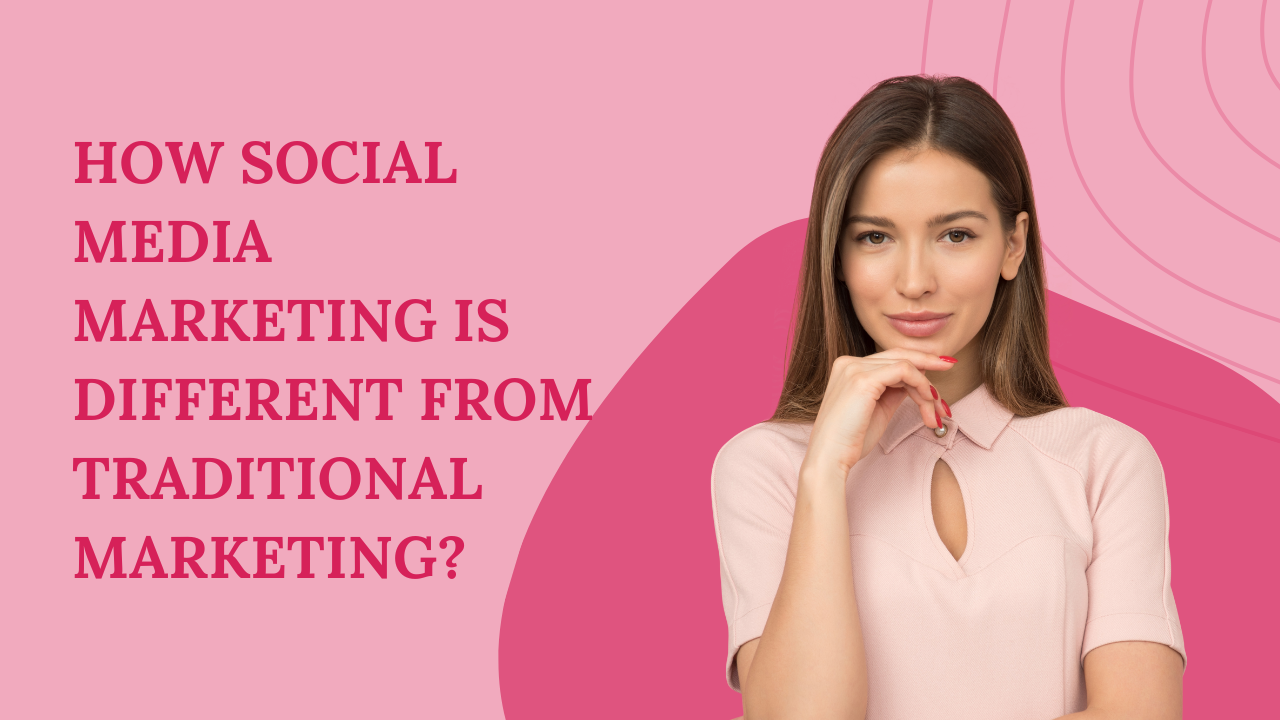 The marketing world has undergone a significant transformation in recent times. While traditional marketing channels like print, television, and radio still hold value, the rise of social media has opened a dynamic new avenue for businesses to connect with their target audience.
The marketing world has undergone a significant transformation in recent times. While traditional marketing channels like print, television, and radio still hold value, the rise of social media has opened a dynamic new avenue for businesses to connect with their target audience.
This article delves into the key differences between social media marketing and traditional marketing, highlighting the unique strengths and considerations of each approach.
Reach and Audience Targeting
- Traditional Marketing: Relies on demographics and broadcasted messages. Newspapers, magazines, and television cater to a general audience within a specific area. Targeting specific demographics can be achieved through strategic ad placement, but true individualization is limited.
- Social Media Marketing: Enables laser-focused targeting. Platforms like Facebook and Instagram allow marketers to target users based on a multitude of factors, including age, location, interests, and online behavior. This granular targeting ensures messages reach the most relevant audience segment, maximizing campaign effectiveness.
Interaction and Engagement
- Traditional Marketing: Primarily a one-way communication channel. Print ads, billboards, and even television commercials are delivered without the ability for immediate audience response.
- Social Media Marketing: Fosters two-way communication and engagement. Social media platforms provide a space for direct interaction between brands and their audience. Companies can respond to comments and messages, answer questions, and address concerns in real time, fostering a sense of community and loyalty.
Content and Creativity
- Traditional Marketing: Content is static and limited by format. Print ads rely on visuals and text, while television commercials are restricted by time constraints.
- Social Media Marketing: Offers a diverse range of content formats. Businesses can leverage images, videos, live streams, and even interactive polls and quizzes to capture audience attention and deliver their message creatively and engagingly.
Cost and Measurement
- Traditional Marketing: Costs can be high, particularly for prime-time television slots or large-scale print campaigns. Measuring the return on investment (ROI) can be challenging, often relying on estimates and indirect metrics.
- Social Media Marketing: Offers a more cost-effective approach. Many social media platforms provide free business accounts, and paid advertising options are often flexible and budget-friendly. Tracking campaign performance is significantly easier with built-in analytics that provides insights into reach, engagement, and conversions.
Data Analytics
- Traditional Marketing: Limited data available to measure campaign effectiveness. Traditional methods often rely on estimates and indirect metrics like website traffic fluctuations or an increase in sales calls.
- Social Media Marketing: Provides comprehensive data and analytics. Platforms offer insights into impressions, engagement metrics (likes, comments, shares), website clicks, and even conversion rates. This data allows marketers to refine their strategy, optimize content, and measure the true impact of their social media efforts.
Crisis Management and Brand Reputation
- Traditional Marketing: Limited ability to address negative feedback or public relations issues promptly. Responding to criticism in print or television ads often requires time and additional resources.
- Social Media Marketing: Enables real-time crisis management. Businesses can directly address customer concerns and negative feedback on social media platforms, allowing them to control the narrative and minimize potential damage to their brand reputation.
Additional Considerations and The Future of Marketing
While the core differences between social media marketing and traditional marketing have been addressed, here are some additional factors to consider:
Integration and Cohesiveness:
- Combining traditional and social media marketing efforts can create a powerful synergy. Traditional channels can be used to drive users to social media platforms, where deeper engagement and conversions can occur.
- Consistency in messaging and brand identity across all marketing channels is crucial for building a strong brand presence.
Rise of Influencer Marketing:
- Social media has led to the rise of influencer marketing, where businesses collaborate with individuals who have built a large and engaged online audience.
- Influencer marketing can be a highly effective way to reach a targeted audience and leverage the credibility and trust established by the influencer.
Evolving Social Media Landscape:
- Social media platforms are constantly evolving, with new features and functionalities emerging regularly. Marketers need to stay up-to-date with these changes to adapt their strategies and ensure they are using the latest tools and trends to their advantage.
Focus on User-Generated Content:
- Encouraging user-generated content (UGC) through contests, hashtags, and interactive campaigns can be a powerful social media marketing strategy.
- UGC fosters a sense of community, increases brand authenticity, and allows businesses to leverage the creativity and reach of their audience.
The Future of Marketing: Embracing Personalization
Looking ahead, the future of marketing lies in personalization.
- By leveraging the vast amount of data available through social media and other digital channels, businesses can tailor their content and messaging to individual user preferences and needs.
- This level of personalization will be key to building stronger customer relationships and driving engagement in an increasingly competitive marketplace.
Conclusion:
Social media marketing has revolutionized the way businesses connect with their audience. While traditional marketing channels still hold value, the ability to target specific demographics, foster two-way communication, and measure campaign performance in real time makes social media an essential element of any modern marketing strategy.
By embracing the unique strengths of both traditional and social media marketing, businesses can create a comprehensive strategy that drives brand awareness, audience engagement, and ultimately, business growth.

No comments yet